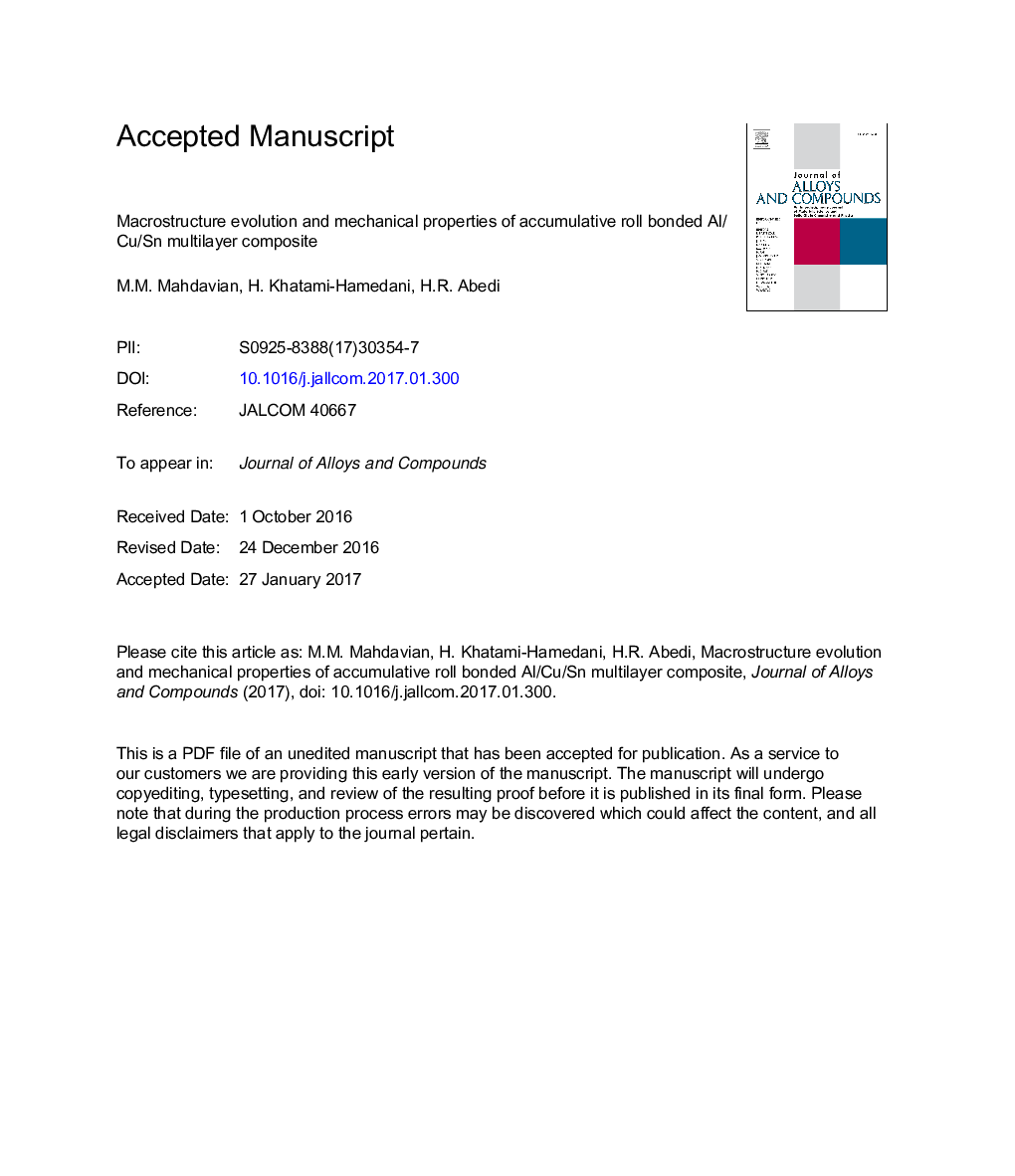| Article ID | Journal | Published Year | Pages | File Type |
|---|---|---|---|---|
| 5460341 | Journal of Alloys and Compounds | 2017 | 30 Pages |
Abstract
The macrostructure and mechanical properties of Al/Cu/Sn multi layered composite produced by room temperature accumulative roll bonding (ARB) is studied. The necking and separation of the reinforcement layers are the main macrostructure evolutions took place during the intermediate cycles. With the increase in the number of the cycles, a uniform distribution of the segmented layers in the matrix is achieved. In addition, the high amount of imposed strain provide higher and faster diffusion path due to increase in dislocation density thus trigger the formation of Cu6Sn5 intermetallic compound. This directly affects the strength and ductility values of the processed work piece. Despite the increasing trend of hardness in Al and Cu layers, the hardness of tin layer remains un-changed due to the high potential of which for dynamic recovery. The tensile strength also increases with the number of cycles, however a decreasing trend can be recognized from the second cycle to the fifth cycle. Surprisingly, the strength again starts to increase continuously up to the eighth cycle. These variations of strength and ductility are properly addressed considering the macrostructure evolution of the laminated composite.
Related Topics
Physical Sciences and Engineering
Materials Science
Metals and Alloys
Authors
M.M. Mahdavian, H. Khatami-Hamedani, H.R. Abedi,
